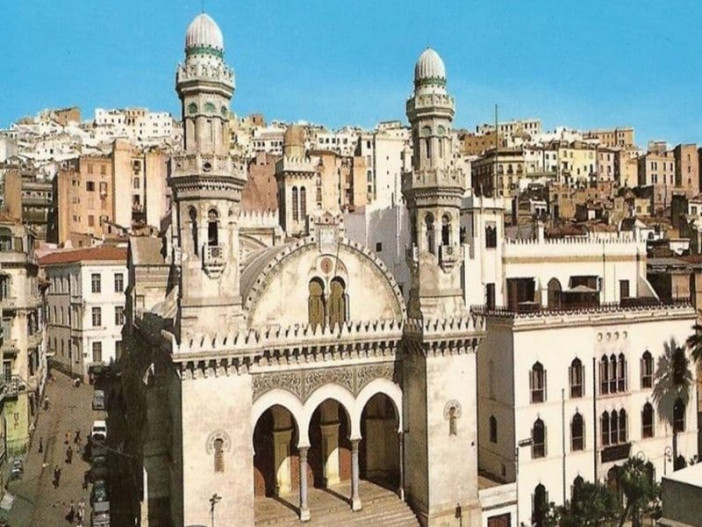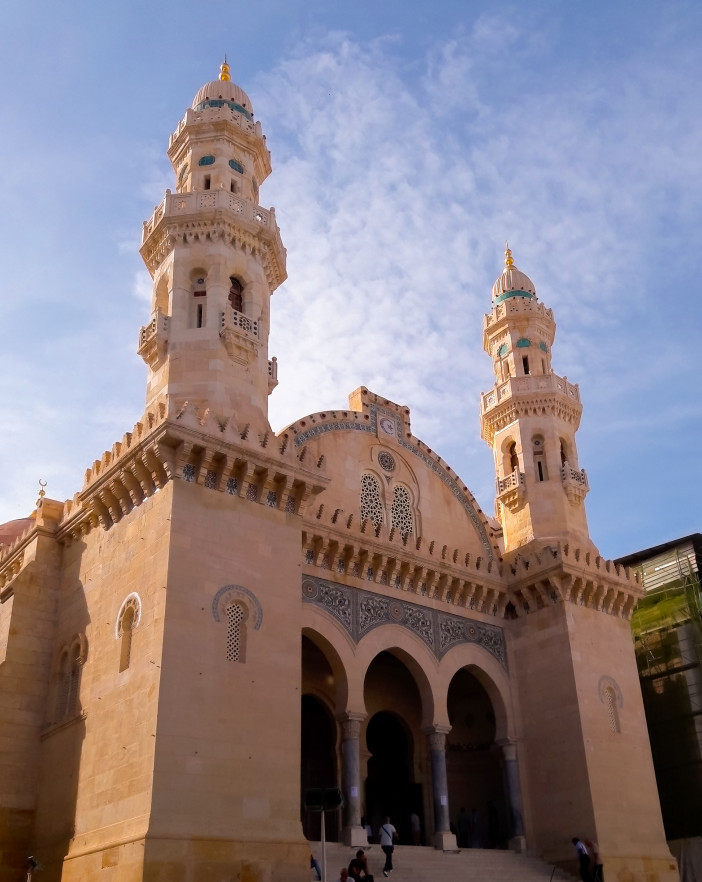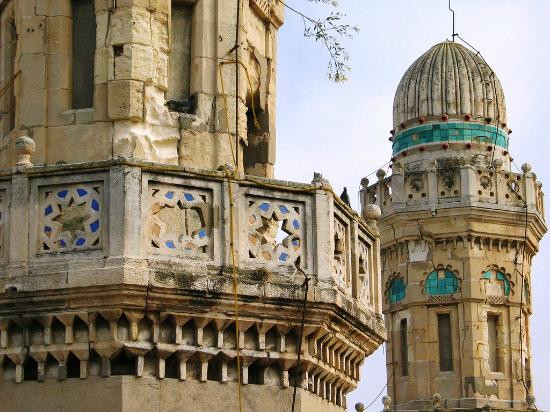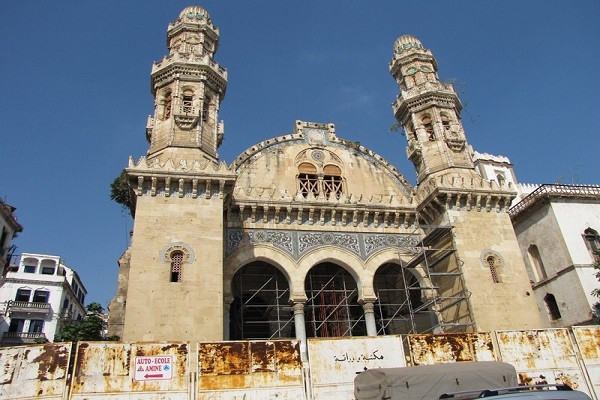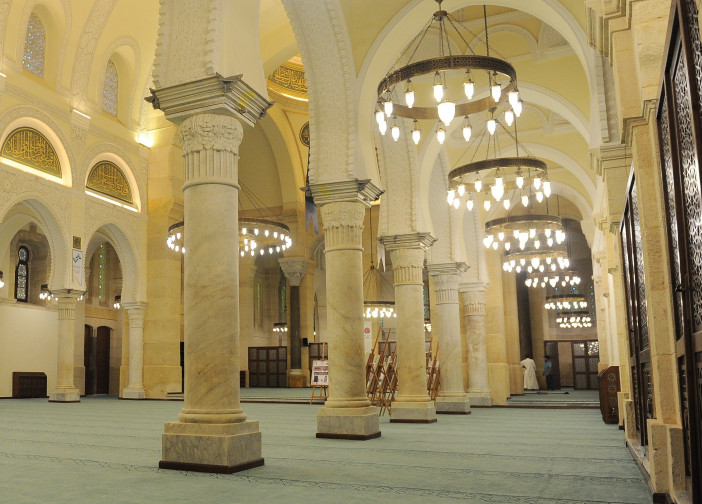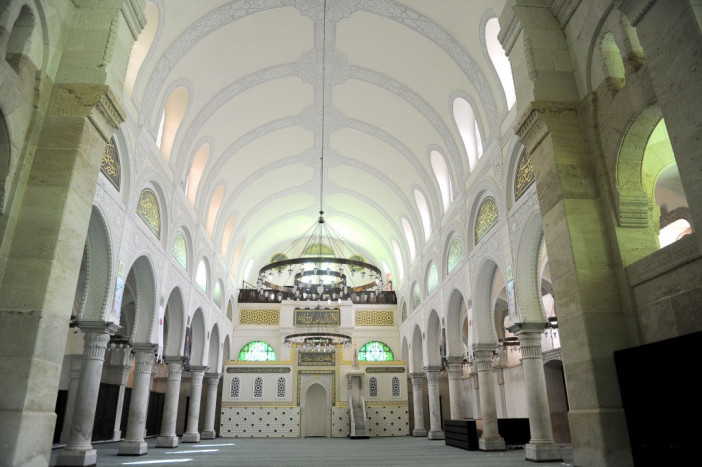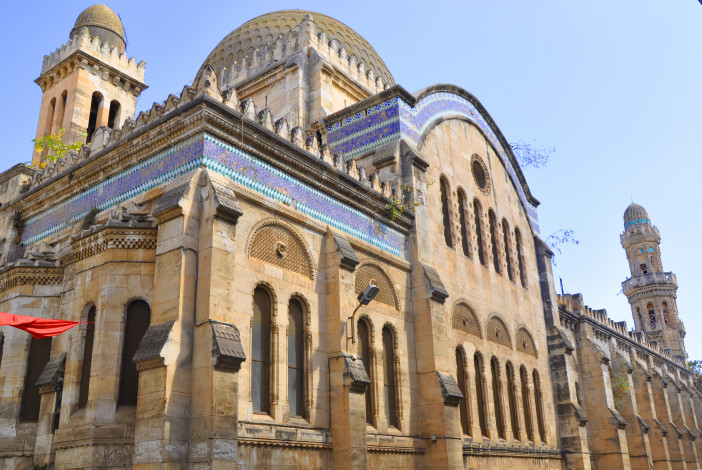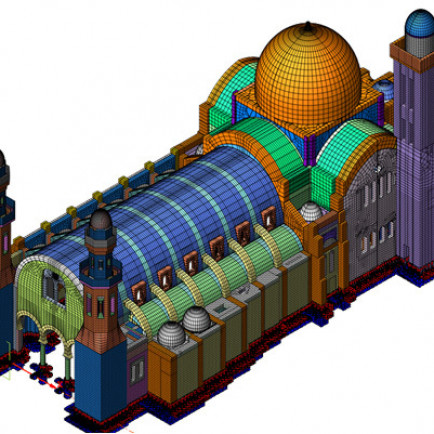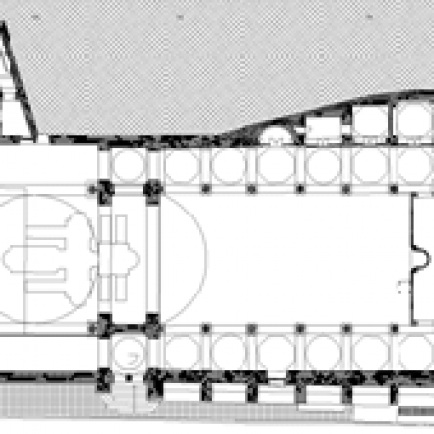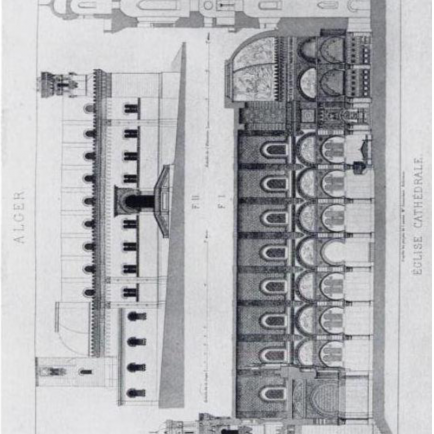Ketchaoua Mosque
History
The date of foundation of the mosque is subject to many assumptions, it would have been built in 1436. According to Myriam Bacha, the Ketchaoua mosque was established at least before the sixteenth century and was restructured and enlarged in 1794. According to Golvin, the current building dates from 1794, and was built on an old place of prayer. However, according to Guemriche, the building dates back to 1612 and was remodelled in 1794.
Urban and Architectural
The Ketchaoua mosque takes up the body of a Christian cathedral, its plan in the form of an elongated basilica also takes up the so-called Jesuit plan, with a wide central nave covered by a barrel vault and side aisles of lesser importance. Its transept is slightly projecting, and when crossing, an oval dome covers everything.
The facade takes up the principle of a Gothic church with a harmonic facade: two towers of campaniles resembling a minaret from the Mamluk period in Egypt surround in perfect symmetry a central body taking up a forecourt and a gallery with three arches.
What is innovative in this plan is the oriental timbre blended with the neo-Romanesque-Byzantine style. This is therefore a purely eclectic style, which evokes various styles (Renaissance for the plan, Gothic for the composition of the facade, orientalizing for the decorations of the towers of the campanile, and a Romano-Byzantine body).
Description
Contrary to what is said in some works, it is indeed a church built as such on the traces of the old Ketchaoua mosque and its hammam (that of Hassan Pasha). Today, only the columns of the entrance square are original: all the rest is a French construction dating back to 1844-1878.
References
https://fr.wikipedia.org/wiki/Mosqu%C3%A9e_Ketchaoua
Details
Location
Casbah 16000, Algérie
Worshippers
600
Owners
Dey Hassan
Year of Build
1436
Area
1200
Drawings
Map
History
The date of foundation of the mosque is subject to many assumptions, it would have been built in 1436. According to Myriam Bacha, the Ketchaoua mosque was established at least before the sixteenth century and was restructured and enlarged in 1794. According to Golvin, the current building dates from 1794, and was built on an old place of prayer. However, according to Guemriche, the building dates back to 1612 and was remodelled in 1794.
Urban and Architectural
The Ketchaoua mosque takes up the body of a Christian cathedral, its plan in the form of an elongated basilica also takes up the so-called Jesuit plan, with a wide central nave covered by a barrel vault and side aisles of lesser importance. Its transept is slightly projecting, and when crossing, an oval dome covers everything.
The facade takes up the principle of a Gothic church with a harmonic facade: two towers of campaniles resembling a minaret from the Mamluk period in Egypt surround in perfect symmetry a central body taking up a forecourt and a gallery with three arches.
What is innovative in this plan is the oriental timbre blended with the neo-Romanesque-Byzantine style. This is therefore a purely eclectic style, which evokes various styles (Renaissance for the plan, Gothic for the composition of the facade, orientalizing for the decorations of the towers of the campanile, and a Romano-Byzantine body).
Description
Contrary to what is said in some works, it is indeed a church built as such on the traces of the old Ketchaoua mosque and its hammam (that of Hassan Pasha). Today, only the columns of the entrance square are original: all the rest is a French construction dating back to 1844-1878.


